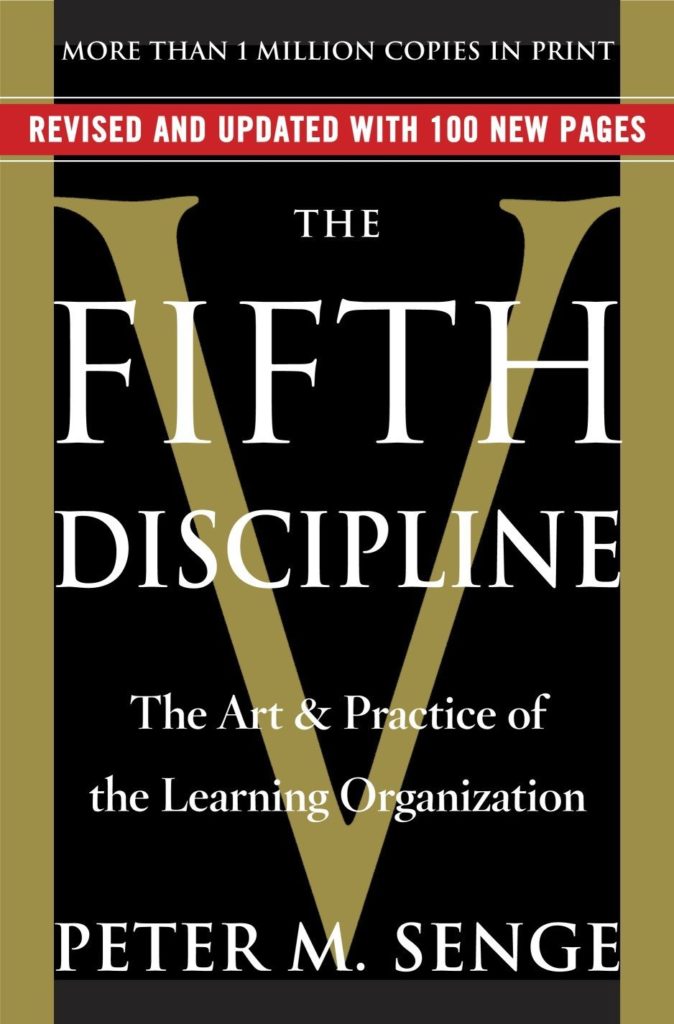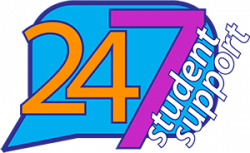
With as much as we talk about pathways, I have to admit I love my totally non-linear approach to books.
Sometimes I find books through random recommendations that float through my Twitter stream … sometimes it’s what’s on the “New in Nonfiction” shelf at the public library (my favorite shelf!) … and sometimes it’s because an author of a book I’m really loving cites a book so often, I figure I need to check it out myself.
“The Fifth Discipline: The Art and Practice of the Learning Organization” by MIT lecturer Peter Senge, falls into the third category.
As you may recall, I have been very inspired by the books about joy by author Richard Sheridan. He stressed the most important thing a leader can do for her organization is to stay in “learner” mode. Sheridan cited “The Fifth Discipline” numerous times, so off I went to Brown Library to check out their copy.
In this classic management book, which was originally released in 1990, Senge explains the five disciplines, which include systems thinking and team learning. He also emphasizes the importance of reflection — to develop our ability to see regular events (and crises) as opportunities to grow and learn.
His quote by educational reformer John Dewey sums it up best:
“We do not learn from experience … we learn from reflecting on experience.” (Emphasis mine.)
In the book, Senge mentioned the After Action Review (p. 290), a tool developed by the U.S. Army.
In its simplest form, an AAR would involve three questions:
- What happened?
- What did we expect?
- What can we learn from the gap?
I read about AARs the day after I hosted a Halloween party at my home, so I asked myself those questions to help improve my next party.
Because I read “The Art of Gathering” a year before, I planned this Halloween party with purpose in mind: To bring my 6-year-old’s school and soccer friends (and their families) together. Connection was the point. This helped me focus our invitation list and activities, which were kid-centered.
While the memories were still fresh, I took just a few minutes to review what happened: I tallied up how many folks attended; noted the food and beverages that were eaten (or not); and other observations about what worked and didn’t that evening.
Thanks to this simple review process (which took maybe 15 minutes?), I already have a list of improvements for next year, including:
- Cookie decorating with store-bought kits was a huge hit with the kids. Next year, I’ll nix some of the other crafts and double down on edibles. I might steal the make-your-own pretzel wand idea I spotted during the Hogwarts open house at Brown Library.
- The delivered pizza that was pre-cut into party-sized squares was super popular with kids and adults (and gone within 30 minutes). Next year, I’ll be sure to order more (especially plain cheese).
- Exactly zero people ate my cheese dip in the slow cooker, which was hiding in the kitchen. I’ll either nix this menu item completely, or move it to a central location, where most folks gather.
- Since all of the kids arrived in costume (and some of the adults), I plan to set up a more formal backdrop for photos.
- Next year, we’ll be sure to test drive the fog machine (which we scrapped at the last minute due to user error) and the dry ice for the bubbling cauldron punch a day before the party. I spent too much time troubleshooting witch’s brew and not enough mingling.
I can apply the same review process to grant proposals and any work project, no matter if they’re considered successful or not. The key is taking the time to reflect … and to make reflection a habit.
— Stephanie Ogilvie Seagle, November 2019






 Shelley Lyons is glad to be back on campus as she is a Virginia Western alum, and has served as the Administrative Officer for Grants Administration at Virginia Western since early 2022. Prior to VWCC, her career focus was within the Human Services and Arts fields. She wrote her first grant in 1996 on a whim and has continued to plan and learn since that time. She most enjoys seeing a well-planned project come to fruition, where funder, project manager and beneficiaries can all feel success and see impact.
Shelley Lyons is glad to be back on campus as she is a Virginia Western alum, and has served as the Administrative Officer for Grants Administration at Virginia Western since early 2022. Prior to VWCC, her career focus was within the Human Services and Arts fields. She wrote her first grant in 1996 on a whim and has continued to plan and learn since that time. She most enjoys seeing a well-planned project come to fruition, where funder, project manager and beneficiaries can all feel success and see impact.